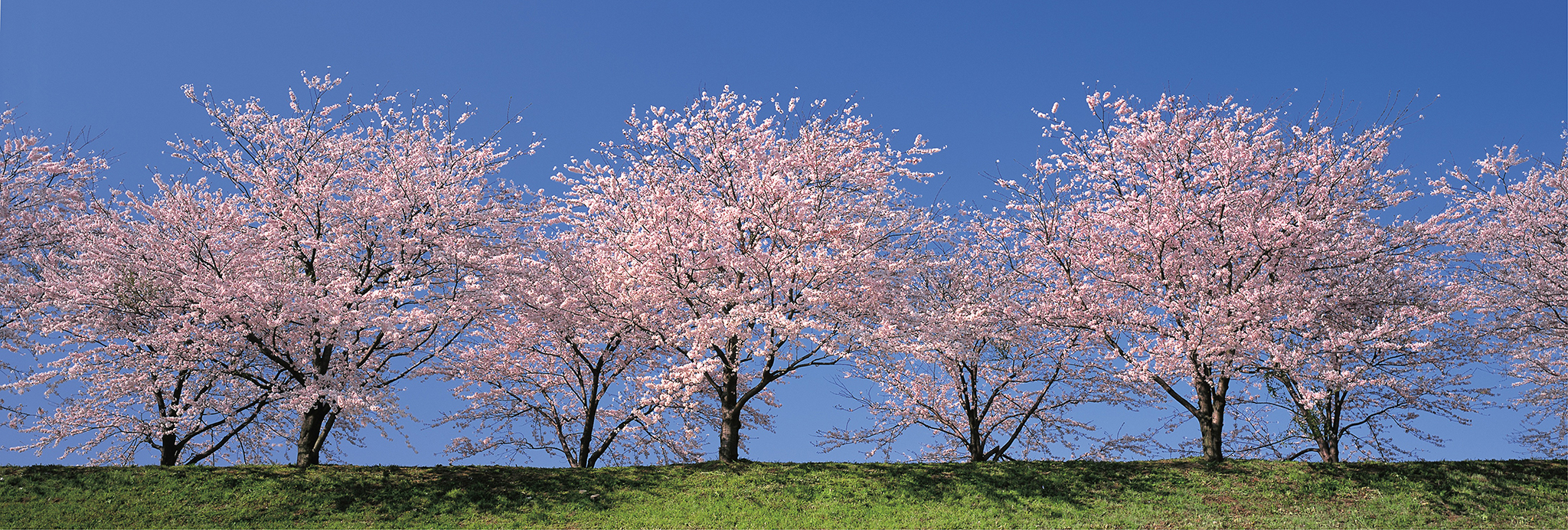
D Cherry blossoms (sakura) in full bloom in Kyoto.
春
Spring
The season of new beginnings
The calls of “oni wa soto, fuku wa uchi” (devil get out, good luck come in) to celebrate Setsubun on February 3 are the first sign Japan is ready for spring. New buds begin to shoot in parks and gardens, starting with the pinks and purples of plum blossoms in late February. And by March, a new round of sneezing and surgical mask wearing begins as the annual wave of cedar allergies hits.
Fresh flavors
By the time spring is officially declared on Shunbun no Hi on March 21, the weather is mostly warm and sunny in Honshu, Kyushu and Shikoku, with cooler Hokkaido lagging a little behind and warmer Okinawa already ahead of the game. And with the new season, heavy winter food gives way to lighter flavors: mountain vegetables come to the fore, plump strawberries appear in supermarkets, and tender bamboo shoots add a freshness to spring menus.
The Annual Blossoms
Nothing says spring like the cherry blossoms, and as they briefly repaint the country a palette of pinks—a movement meticulously tracked on the daily news and in weather apps—the Japanese celebrate with hanami (flower viewing) parties. For most Japanese people, hanami is simply a way to enjoy nature and the company of family and friends, but culturally there is a deeper philosophical significance to the ritual. The viewing of the blossom’s fleeting existence epitomizes the concept of mono no aware, the melancholy and joy we feel with something so beautiful, yet impermanent. You can experience hanami anywhere in Japan—all you need to join in with the locals is a picnic sheet, a bento, and a few drinks.
Spring festivities
Hanami isn’t the only major event in spring. If you visit in mid-March, you will witness White Day on March 14, when men give gifts to women in return for those they received on Valentine’s Day; only women give gifts on February 14 in Japan.
Many Japanese people travel during the Golden Week holidays from April 29 to May 6—a period in which a collection of national holidays falls and travel prices spike—while on the third weekend of May, Tokyo’s Asakusa district is home to one of the most sake-fueled and high-energy festivals on the annual calendar, the Sanja Matsuri. Honoring the founders of Sensoji temple, it features teams of pallbearers carrying 100 portable shrines through the heaving streets—bouncing, jostling, and hollering in the warmth of the late-spring sunshine.
Back down to earth, the fiscal and academic years commence on April 1, bringing the annual round of transfers in many businesses, plus entrance ceremonies at universities, high schools, junior highs, and even nurseries. The rice cycle begins, too, with seedlings being nurtured in greenhouses and then planted into paddies.
